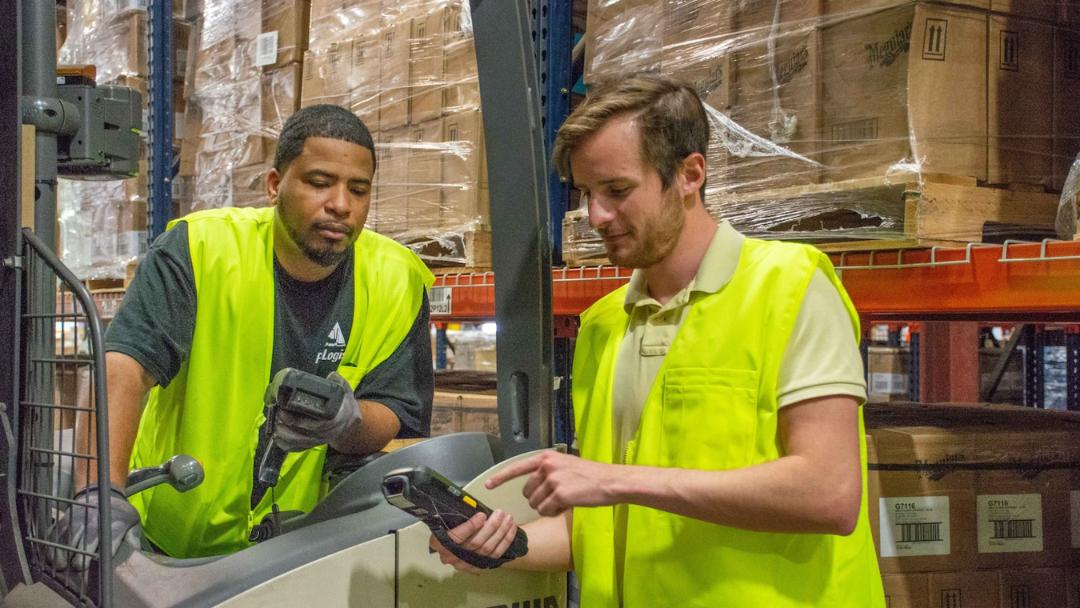You undoubtedly know how much it can cost your company to replace full-time employees when they leave: SHRM in 2019 estimated that the cost to replace an hourly worker was an average of $1,500.
That was 2019. Today—early 2022—we calculate that it’s far more.
Our clients, for example, are paying about $14-$15/hour for “simple” picker/packers in their logistics warehouses. It costs about one-fifth of a team member’s annual pay to replace them, so even at the low end of $14/hour (or just a bit less than $30K per year at a 40-hour workweek), that one-fifth comes to almost $6K.
What’s more, the blog post above mentioned that one company—with an hourly employee attrition rate of 160 percent!!!—“took a toll on the bottom line, as the company was forced to pay employees overtime to cover vacant shifts.”
We’re sure you can relate.
While SHRM was referring to the company’s permanent hourly team members, not temporary/contract staff, the churn of this type of talent can lead to the same thing:
- You may have to pay temporary talent overtime to cover vacant shifts.
- Working these longer hours may irk some of your talent, prompting them to quit, as well.
- It also can mean that full-time team members need to take time away from their duties to fill in for missing temporary talent.
As for how high contract/temporary talent attrition is, Statista in mid-January reported statistics on the turnover rate for temporary/contract staff from 2012 to 2019, with turnover in 2019 at a whopping 415 percent! (Which was a decline from 420 percent in 2018.)
Statista didn’t mention 2020 or 2021, but we feel it’s safe to say that attrition significantly increased these past couple of years.
Why so?
Warehouse employment has grown steadily—and massively—during the pandemic, breaking record after record.
A lot of that employment growth has been in the form of bringing on temporary logistics/warehouse/e-commerce and even contact center staff to handle all of the work needed to get packages purchased online by consumers delivered to their home or office.
And because there is such high demand for talent, many companies have been raising pay rates to attract hard-to-find workers because….
Many of those same workers start a temporary position and then leave quickly if they find another position that pays more.
Yet pay rates aren’t the only reason short-term talent leaves: workers across the country have been leaving their employers by the millions these past several months because they feel their employers haven’t treated them well for years.
This includes contract/temporary talent. We have seen it first-hand: if our clients don’t pay what talent feels is a fair wage, they walk quickly to another assignment at another staffing service. How quickly? They may leave the next day. Perhaps a week if they dislike the assignment or the client’s “atmosphere.”
Temporary talent attrition is extremely costly.
It is just as expensive to lose temporary personnel as it is when you have high-level full-time talent leave. So much so that talent churn when you’re working to grow your business with the help of a temporary workforce can completely wipe out any profit from that business growth!
Remember, it’s hard enough recruiting full-time talent; it’s harder to attract for contract/temporary work when candidates know that full-time, “permanent” positions are readily available.
And it’s not just about the money.
Many of our clients who come to us about helping them find—and retain talent—find out that it’s often “not just” the fact that they’re not paying market rates. Their temporary workforce members often leave because they don’t feel appreciated, just as their more permanent counterparts have been doing (as mentioned above).
In short, talent of all kinds at all levels are letting employers know with their feet about how happy they are with the employer’s workplace culture.
One secret to retaining temporary staff…
Treat them as you do your permanent team members. Just make sure you already treat them well, with plenty of respect.
Real-life success story
One of our clients (which doesn’t have a great pay rate) enjoys a terrific temporary talent retention rate because they treat this workforce segment as they do their permanent employees. They take part in all activities and fun perks that in-house employees do. The company culture is fun and engaging: talent enjoy dress-up days and themed competitions.
Pay attention to—and provide—the things that REALLY matter to your temporary workforce members.
These include, but are not limited to:
- Market rate wages.
- Guaranteed pay rates (no hidden fees for equipment, etc.)
- Job security: promise—and deliver—assignments that are X number of weeks and make sure the assignment IS X number of weeks.
- Shift and schedule start times that are convenient for the talent.
- A clean and safe work environment, particularly for logistics/warehouse. Light and bright and inviting.
- Break rooms, guaranteed lunch breaks/times.
- Incentives such as on-time arrival, no missed days, stay the entire length of the assignment, etc.
- Solid COVID-19 safety precautions.
- Warehouse safety programs.
- Positive Indeed and Google employee/talent reviews.
- Open and always honest communication between the staffing company, its client, and its on-site workers.
- Opportunities for advancement.
We know it’s not possible to take on to your own payroll all of the great folks who work with you temporarily.
But you could…
- Let them know – if true—that you hire on to your payroll some of the people who work for you temporarily. Clearly explain these parameters: how many, when, what team members have to show you to become hired, etc.
- Even if you can’t hire people as your employees, discuss if/when assignments might be extended and for how long.
- If possible, offer temporary team members the chance to learn new skills on the job.
We predict that labor shortages are here to stay for most—if not all—of 2022. Staffing with temporary talent for the short- or even long-term can help your business not only weather these challenging times but thrive.
Learn more about how Employbridge can help you meet your workforce staffing goals this year.


